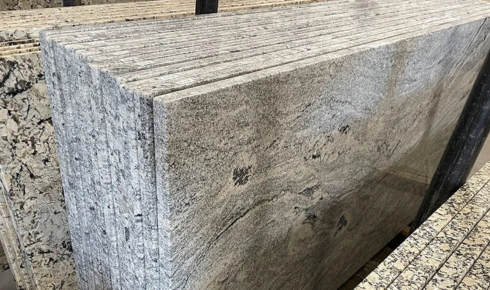Key Takeaways
- Granite is valued for its resilience, versatility, and distinctive appearance across homes and public spaces.
- Numerous real-world examples and studies underscore the innovation and sustainability associated with Granite.
- Choosing quality granite can transform both residential and commercial settings with lasting results.
- Fresh applications and eco-conscious sourcing expand the appeal of Granite for today’s projects.
Table of Contents
- Why Granite Remains a Top Natural Choice
- Granite’s Historic Footprint Still Influences Today
- Beyond Countertops: Unusual Uses of Granite
- Environmental Perks: Natural Stone and Sustainability
- Fresh Ideas: Recent Innovations in Granite Use
- Practical Tips for Choosing Granite for Your Projects
- Expert Insights and Real Life Examples
- Frequently Asked Questions
- Conclusion: Embracing Granite’s Enduring Legacy in Modern Life
Why Granite Remains a Top Natural Choice
Due to its resilience, Granite, a natural stone known for its toughness and agelessness, is popular for luxury kitchens, commercial spaces, and civic spaces. Originating from Earth’s crust under intense pressure, Granite is dense, complex, and resistant to heat, abrasion, and scratching. This remarkable durability explains why anyone seeking quality granite Pittsburgh frequently opts for this material to anchor high-use areas such as countertops, floors, and public entryways. Granite’s versatility doesn’t end there—its rich variety of natural hues and unique veining make every installation aesthetically distinct. Granite’s appeal extends beyond aesthetics, as research shows it outperforms synthetics and natural materials in areas with heavy impact or temperature fluctuation. It’s less likely to warp or stain, ensuring its luster even after years of constant use. Granite’s durability is evident in family homes, busy restaurants, and high-traffic lobbies, proving its worth year after year.
Granite’s Historic Footprint Still Influences Today
Granite is a widely used material in architecture and monument building, with landmarks like the ancient Egyptian pyramids and American courthouse steps featuring it. Early civilizations valued Granite’s strength and durability; many of these monuments remain today. In modern applications, urban planners and architects use Granite for city squares, walkways, museums, and public art. Its historical roots inform its current use, as designers blend old and new by incorporating Granite’s stoic beauty into contemporary projects. Subtle nods to classic craftsmanship can be seen in plazas with granite pavers or state-of-the-art buildings framed by granite facades, proving that the lessons of the past can still deliver relevance, functionality, and style.
Beyond Countertops: Unusual Uses of Granite
Granite is a versatile stone used in landscape architecture, city planning, and art. Due to its weather resistance, it is used for garden benches, stepping stones, outdoor kitchens, and retaining walls. City planners use granite curbs and paving stones for streetscapes, while artisans create sculptures and fountains for community parks. Granite’s role in everyday life is even more evident in commemorative plaques at schools, chess and picnic tables in public parks, and elegant seating in plazas. In facilities like train stations and sports arenas, granite tiles provide a sophisticated finish and are one of the hardest-wearing floors.
Environmental Perks: Natural Stone and Sustainability
Granite is gaining attention as a sustainable building solution due to its natural, eco-friendly nature. Its environmental impact is primarily determined by quarrying and transportation, and its carbon footprint is significantly reduced when sourced locally. Granite is free from toxins, does not off-gas, and can be repurposed or recycled. Life cycle assessments show that granite installations outlast synthetic ones by decades, minimizing waste and reducing the frequency and resources required for replacement. Choosing Granite can be a small but impactful part of broader sustainable development goals, especially with responsible quarrying and minimal processing.
Fresh Ideas: Recent Innovations in Granite Use
Technological advancements in stone cutting, finishing, and installation have opened up new creative possibilities for Granite. Thin, durable granite panels are now used as cladding on modern skyscrapers, providing elegance while being lightweight and energy-efficient. This allows architects and designers to apply Granite to elevator walls, backsplashes, and ceilings. Municipal planners are installing granite pavers in plazas and pedestrian thoroughfares, showcasing their resilience and ability to age gracefully. Innovative examples like public art installations demonstrate how Granite can serve both functional and aesthetic purposes outdoors.
Practical Tips for Choosing Granite for Your Projects
- Project Assessment: Consider where your Granite will be installed—areas exposed to sunlight, moisture, and heavy use will benefit most from high-grade, weather-resistant Granite.
- Finish Selection: Polished Granite suits spaces like kitchens and foyers that benefit from a glossy, reflective look, while honed or flamed textures provide subtlety and slip resistance in bathrooms, patios, or pool surrounds.
- Inspect for Quality: Examine each slab for uniformity in color, structural soundness, and quality of finish. Natural imperfections can add character, but avoid slabs with hairline cracks or large fissures.
- Source Responsibly: Whenever possible, ask suppliers about the quarry location and their ethical practices. Supporting local or regional quarries can help reduce environmental impact and support community economies.
- Budget Thoughtfully: While Granite is often associated with luxury, many affordable options exist. Consider standard hues and thicknesses, and work with experienced fabricators to maximize your project’s budget.
Expert Insights and Real Life Examples
Granite plays a crucial role in shaping practical and beautiful spaces, as seen in school districts replacing marble steps with granite treads, and in public parks where landscape architects install benches and art pieces made from local Granite. In contemporary homes, Granite, such as accent walls in living rooms or dramatic fireplace surrounds, is often used unexpectedly. Some families even use granite pavers for outdoor kitchens and backyard fire pits, showcasing their endurance, low maintenance, and natural charm. These real-life stories highlight Granite’s versatility in enhancing spaces’ aesthetic appeal.
Frequently Asked Questions
- Is Granite worth the investment? While initial installation costs for Granite are typically higher than some alternatives, the material’s incredible durability often leads to savings in maintenance and replacement. Granite’s longevity means it can serve a home or public space for several generations without losing appeal.
- Can Granite be safely used outside? Granite is one of the best choices for patios, pathways, retaining walls, and pool surrounds. It resists fading in sunlight, won’t crack in cold climates, and maintains its structural integrity through intense heat or rain.
- Is maintenance difficult? Granite scores high marks for being easy to care for. Routine cleaning with mild soap and water, along with periodic sealing, will keep surfaces protected. Modern granite sealants can last up to three years or longer, reducing the frequency of upkeep.
- How can you confirm Granite is sustainable? Look for suppliers who use transparent sourcing methods and can provide information about the origin and quarrying practices. Opting for locally sourced Granite—when available—further reduces your project’s carbon footprint.
Conclusion: Embracing Granite’s Enduring Legacy in Modern Life
From ancient monuments to modern homes and public spaces, Granite continues to prove its worth through beauty, strength, and practicality. Its enduring appeal lies in its visual richness and unmatched durability, environmental advantages, and evolving applications. Whether used in high-end kitchens, outdoor landscapes, or innovative architectural designs, granite bridges tradition with modernity in meaningful and lasting ways. Homeowners, designers, and city planners can make informed, sustainable decisions that elevate everyday environments by understanding how to choose, source, and apply Granite effectively. With its timeless resilience and surprising versatility, Granite remains a cornerstone of functional design, celebrated for its heritage and forward-thinking potential.

